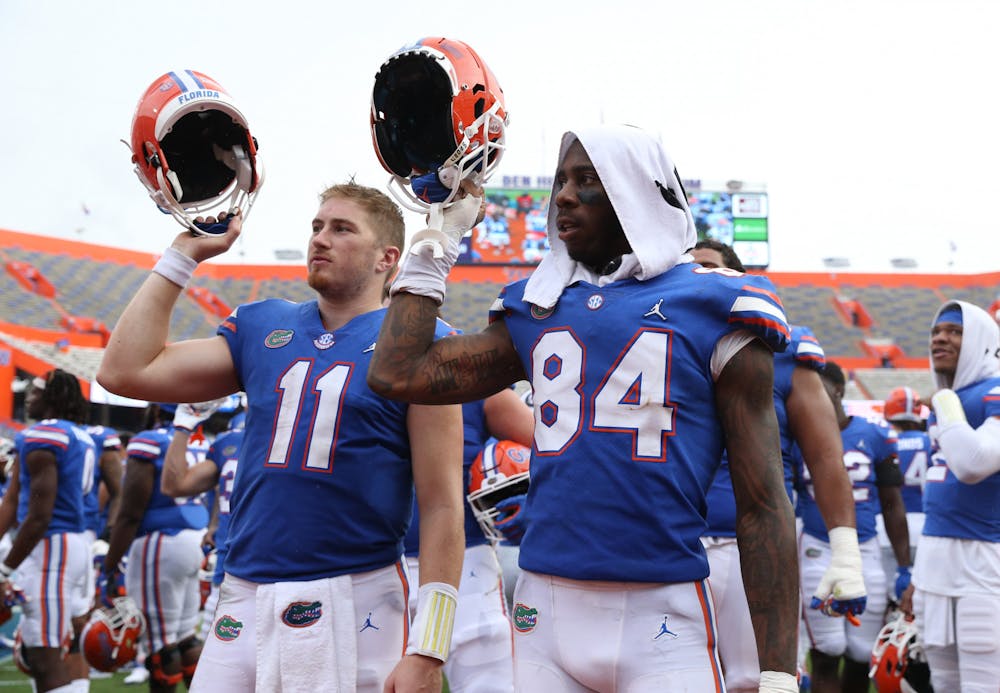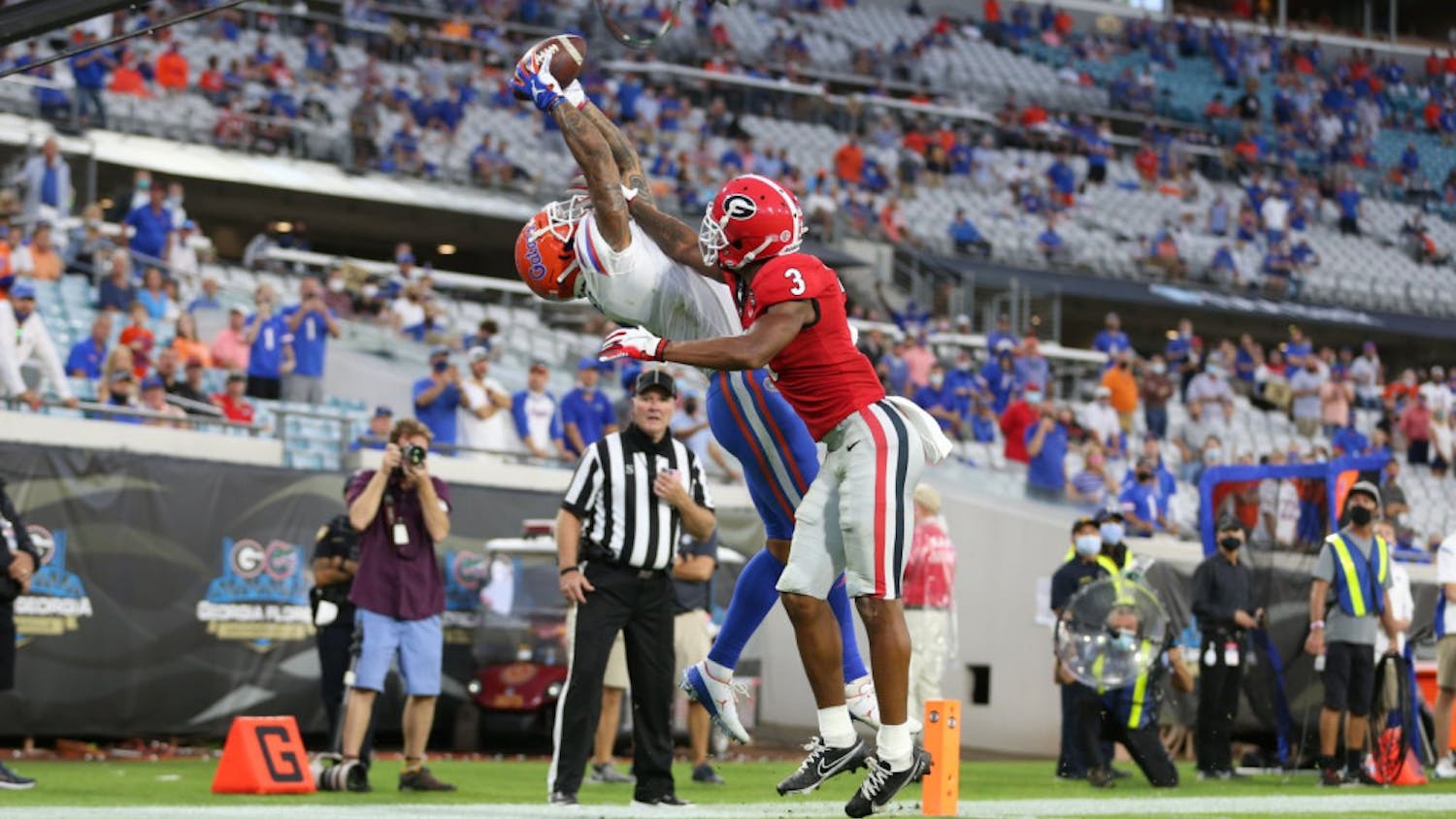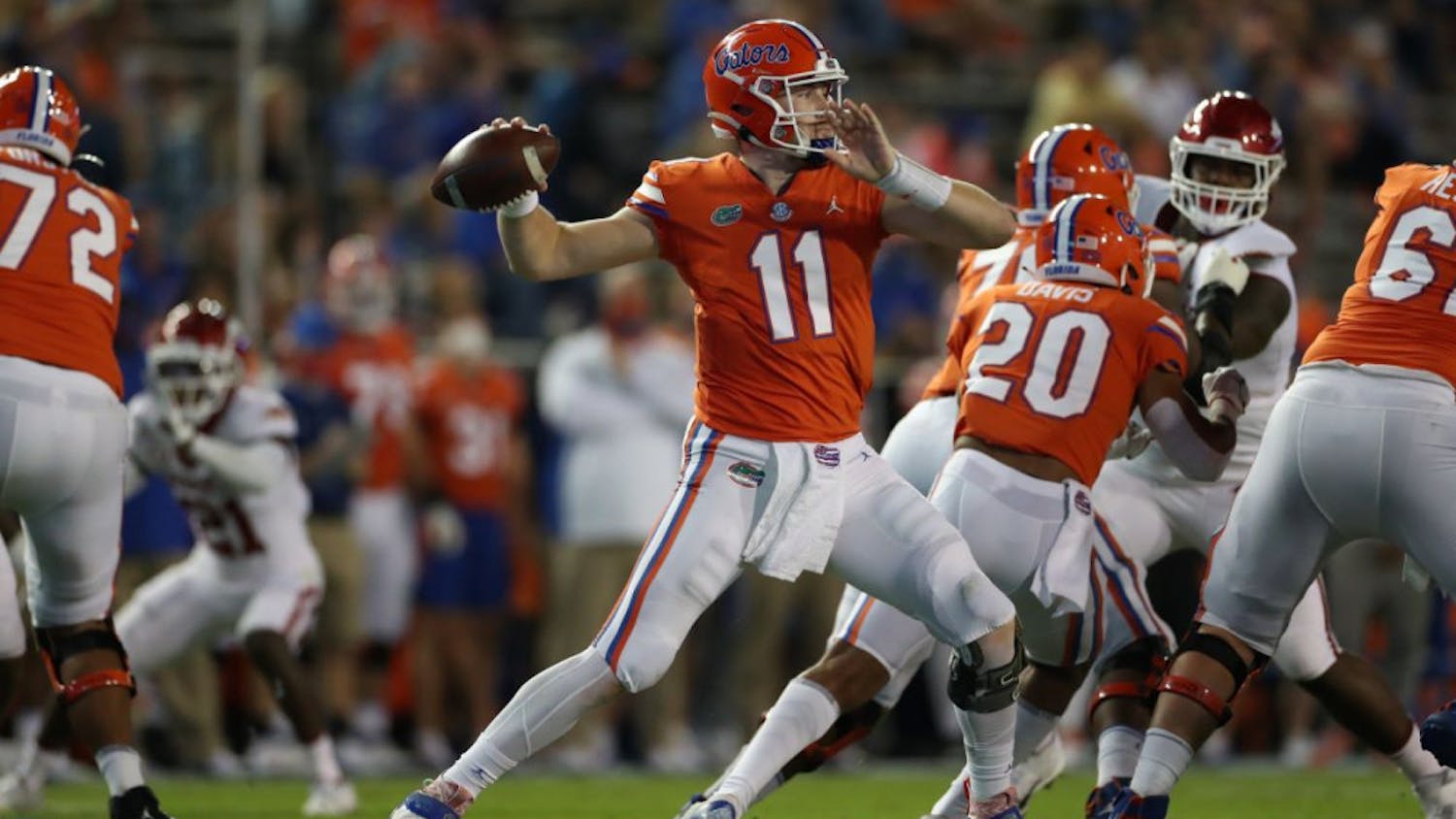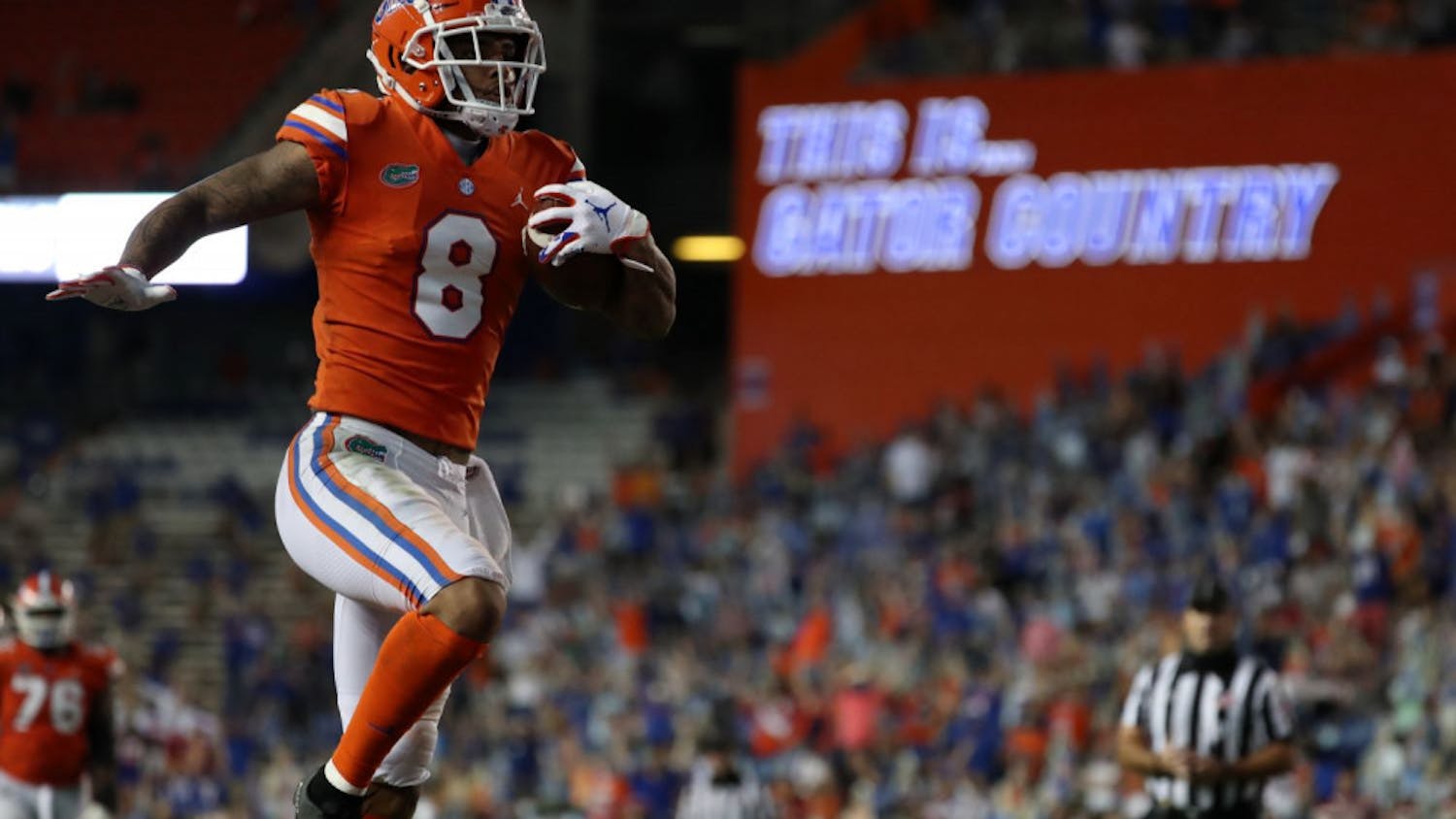LSU set the college football world on fire last season with an offense straight out of the NCAA video games, a quarterback who won the Heisman Trophy, NFL-caliber talent and a defense that was just good enough at the right time to secure 15 wins and a national championship.
That script is eerily similar to what the Gators have done this year, minus the undefeated season and the national championship.
They have Kyle Trask, who is one of the favorites to win the Heisman Trophy. They have an offense that embarrasses the rest of the SEC, scoring 43.4 points per game. They have all-world tight end Kyle Pitts, who should hear his name called fairly early on draft night.
To complete the look, they have a defense that has been brutal at times and mediocre at best. That led some to conclude that this year’s Florida team could repeat LSU’s run last year.
However, this year’s Gators are more like the Great Value version of last year’s 2019 LSU team than the real thing.
Strength vs Strength
The Kyle Trask-Joe Burrow comparisons aren’t too far off. Through eight games, Trask threw for five more yards (2,810) and four more passing touchdowns than Burrow. Burrow finished the 2019 season with a higher QBR (94.9 vs 93.4 for Trask) and completion percentage (76.3% to Trask’s 71.4%).
The efficiency numbers are eerily similar as well. Looking at Expected Points Added (EPA) per pass, which values plays in terms of points, Burrow averaged an EPA of 0.46 per pass in 2019, second behind Tua Tagovailoa. Trask has an EPA per pass of 0.47, which is also only second to an Alabama quarterback (Mac Jones) out of passers with at least 150 throws.
Burrow and Trask have an identical success rate on passing plays of 56.5%. Burrow led the nation in success rate last year, but Trask sits below Jones (58.5%). Burrow was a much more capable runner, but their passing profiles are remarkably similar.
However, the LSU-Florida comparison fails when looking at other aspects of the Gators’ offense, specifically how well both teams ran the ball.

LSU combined a quarterback who threw for over 5,600 yards with one of the country’s best rushing attacks. The only team with a higher EPA per rush than LSU (0.19) in 2019 was Clemson (0.26). Running back Clyde Edwards-Helaire ran wild against opposing defenses, leading the Tigers to the country’s second-best success rate (51.3%).
The Tigers were also explosive when they ran the ball. LSU reeled off 25 runs of 20 yards or more, tied for 24th in the country. Edwards-Helaire had 16 rushing touchdowns, which was more than most teams managed to muster last season.
According to EPA per play, LSU’s rushing prowess combined with its lethal passing attack created the nation’s best offense (0.35).
The Gators, on the other hand, have struggled running the ball compared to last year’s LSU squad. They’re barely breaking even at 0.02 EPA per carry, and it’s dragging down the offense. Florida sits at eighth in the country in EPA per play and fourth in the Power Five.
The Gators also don’t produce very many “successful” running plays. Florida has a pedestrian success rate of 40% on rushing plays, 58th in the country.
To put it simply, Florida has had similar results to last year’s LSU team through the air, but it has a long way to go before matching the Tigers’ insane efficiency on the ground.
Defensive woes
The Gators kicked off the season on defense by allowing over 600 yards of offense and nearly eight yards per play against Ole Miss. Two weeks later, Texas A&M ran Florida over to the tune of 543 yards, 205 of which came on the ground. The Aggies went 12 for 15 on third down and upset the Gators 41-38.
The futility of the Gators’ defense has been a consistent storyline for Florida all season long. Of any team in the College Football Playoff Committee’s top 25, the Gators’ defense is among the worst.

Wisconsin has only played three games this season, so the Badgers throw things off here, but the fact remains that Florida’s defense pales in comparison to other contenders. It has the second-worst EPA per play and EPA per pass and the fourth-worst EPA per carry out of teams in the CFP’s latest rankings.
But hey, that LSU team wasn’t great defensively, right?
About that.
Sure, the Tigers weren’t great on that side of the ball in 2019. But they were still better than this year’s Gators team.

With defenses, lower EPA numbers are better, and it’s clear that LSU could at least dependably get off the field on defense. The Tigers weren’t among the elite defenses, but they definitely fell into the “good enough” category.
LSU’s defense that year also improved significantly from the beginning of the season.
The Tigers allowed 33 points per game in their games against No. 9 Texas, Vanderbilt, Utah State and No. 7 Florida. In the rest of their run to a national championship, opponents scored just 22.3 points per game. That stretch included four matchups against top-five teams as well as No. 9 Auburn.
The Gators, on the other hand, were a raging dumpster fire to begin the year and are now a slightly smaller one. Since the Texas A&M game, Florida’s defense has a respectable EPA per play of -0.05, 39th in the country.
But that number needs some context. UF’s schedule in terms of opposing offenses during that span has been Charmin soft. The Gators haven’t faced an opponent in the top 50 in EPA per play, and their best competition since then (Georgia) isn’t even starting the same quarterback they met in Jacksonville. Even against bad competition, the results haven’t been all that promising.
For example, against Vanderbilt, whose offense famously couldn’t get into field-goal range against Missouri, the Gators gave up 17 points. Vanderbilt quarterback Ken Seals had by far his best game of the season, throwing for more than 300 yards, two touchdowns and a ridiculous EPA per pass of 0.43. He was benched the next week against Missouri.
In a sense, the UF defense has moved from spotting opponents points from the get-go to just being wildly inconsistent.

The Gators had their two best games of the season defensively back-to-back against Missouri and Georgia before struggling against Arkansas and turning in a this-is-bad-because-it-was-against-Vanderbilt performance the week after that. It’ll be a trial by fire against Alabama in the SEC Championship Game if Florida clinches its spot in Atlanta with a win this weekend.
Conclusions
The fact that Florida has lost a game this season and sits outside of the College Football Playoff should answer the question of “Is Florida this year’s LSU?” pretty easily. Yes, the Gators have gotten a Joe Burrow-esque performance out of Trask, but there are many questions elsewhere.
Their defense is a legitimate concern that shouldn’t be excused with a “Well, LSU won a national championship with a bad defense.” The Bayou Bengals still managed to have a top-20 defense according to ESPN’s SP+ rankings. Florida sits at 32nd following a rare solid performance against Kentucky.
The Gators still can’t run the ball well consistently, and the run game has only produced a grand total of five runs of 20 yards or more.
However, there’s still some time left for Florida. Win the SEC Championship Game, and you’re in the CFP for the first time in school history, assuming UF wins out. Lose, and you’re back at a New Year’s Six bowl game for the third year in a row.
There are worse places to be in college football.
Contact Brendan Farrell at bfarrell@alligator.org and follow him on Twitter @Bfarrell727.






